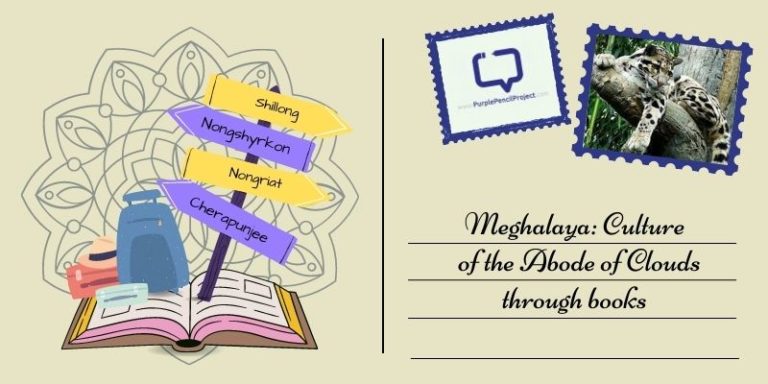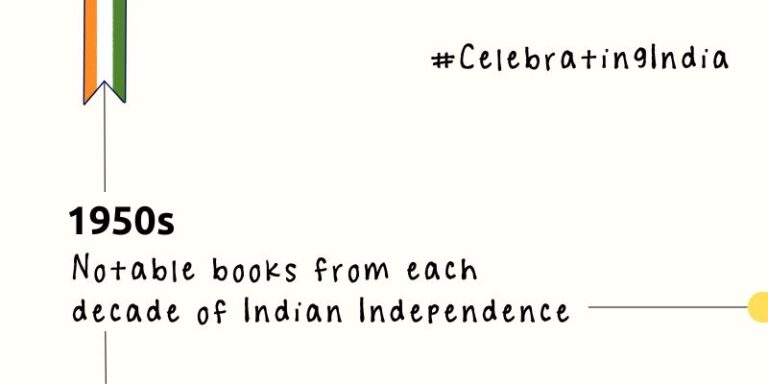“Fiction is the lie which tells the truth”
History has always held an inexplicable sway over the reader. The far off time and setting, the characters, the lifestyle, the language, the event in itself or a combination of these factors, and above everything, the persistent sense of mystery, it exerts a pull in so many different ways.
When these elements are wrapped in fiction, they move above a drab classroom lecture to become something relatable, colourful, and alive. It takes us from the macrocosm to the microcosm, from the broad, sweeping strokes of a grand narrative to those little once-mundane details that take centre stage. Which is why we bring this list of Indian historical fiction novels, which give us a glimpse into the history not taught in our school books, that tell us about places and battles of India, about people forgotten and groups unrepresented.
What do we mean by historial fiction? The Encyclopaedia Britannica defines it as, “…that has as its setting a period of history. The work may deal with actual historical personages . . . or it may contain a mixture of fictional and historical characters.”
Now for the list.
Jorasanko by Aruna Chakravarti

Jorasanko is a neighbourhood in Kolkata, famous as the abode of the illustrious Tagore family. In her novel, set in the time of the Bengal renaissance, Aruna Chakravarti brings to the foreground the women in the Tagore family and their contributions in the making of its men. At the same time, it’s also a portrait of a household of a family that was largely in the public eye.
We are brought face to face with the variously talented and intelligent women of the household like Jnananandini, wife of Rabindranath’s elder brother Satyendranath; Sarada Sundari, Rabindranath’s mother; Jogmaya, spouse of Girindranth who was Rabindranath’s uncle; Tripura Sundari, Rabindranath’s aunt; Digambari, Rabindranath’s grandmother; Kadambari Devi, Rabindranath’s sister-in-law and Mrinalini, his wife.
We meet the women, but the men make an appearance too. For a country that celebrates one of the men so much, it brings ample perspective on the more human side of the artists and the lives they led.
Sea of Poppies by Amitav Ghosh

Sea of Poppies is the first part of the Ibis trilogy and a read worth your while. Ghosh sets his magnum opus against the backdrop of the opium trade, that led to the opium war, and the effect it had on generations of people.
The opium trade between Britain and China was the British method of countering the China-Britain trade which was proving profitable only to the Chinese. To reverse this, they introduced opium into China, which was cultivated in India. As trade flourished, so did the addiction to opium. This also led to the first opium war, fought from 1838-1842, which China lost.
Using this as the background, Ghosh presents before us a sweeping view of the people who come together from different places and situations in life in the ship Ibis, which is a vessel of the opium trade in India. Reading this book is like engrossing and absorbing oneself completely into a time and place far removed from the present. It’s also a linguistic delight and one cannot help but marvel the great research that must have gone into the making of characters who speak in such different languages and dialects.
A Flight of Pigeons by Ruskin Bond

Written in a very different vein from his usual style, A Flight of Pigeons is set in the small town of Shahjahanpur during the revolt of 1857. Mariam Labadoor runs for her life with her daughter Ruth after her husband is killed in the revolt. The duo is taken in by Lala Ramjilal who tries to keep them safe. When Javed Khan comes to know of this, he takes them away forcefully. But he is motivated not by the urge to kill but love as he wants to marry Ruth.
The novella deals with these incidents and what happens to Mariam and Ruth in their aftermath. Bond writes that this novella is based on real events and has also provided some newspaper clippings of a similar incident in the notes section to support his claim. The historical setting is unique, and Bond’s writing brings the then contemporary Shahjahanpur alive for us.
Cuckold by Kiran Nagarkar

Set in 16th century Mewar, this gem of a novel is based on the life and marriage of Mirabai and Bhojraj and attempts to look at their marriage from Bhojraj’s perspective, who is the heir apparent of his kingdom.
But this sprawling novel is not just about their marriage. It is, in fact, also about the socio-political-cultural intrigues of the time. There are battles being fought as Mewar is under constant threats from Malwa and Gujrat, court intrigues and a tussle for power are underway in the royal family as Bhojraj’s status as the heir is under constant threat. Bhojraj is presented here not just as Mirabai’s husband but as a warrior, a prince, a son and a lover. The beauty of the novel is that it makes the readers see and sympathise with both Mira and Bhojraj as events unfold before them.
The novel is a must read which gives its reader an authentic sneak into a crucial time of India history and presents before them the characters as real people of flesh and blood.
The Black Hill by Mamang Dai

Set in 19th century Arunachal Pradesh, this novel centres around a true event – the mysterious disappearance of a French priest, Father Nicolas Krick, in the 1850s, and the execution of Kajinsha from the Mishmee tribe for his murder – and creates a tale around it.
This is when the East India Company is inching towards the North-east and the people are unsure of what to do. It works brilliantly to include the region when talking about British rule in India. This is also a love story – that of a man and a woman and that of a priest for his vocation – marred by and stamped with the circumstances and situations of their times. The novel brings alive the era, traditions and landscape in which it is set, neatly wrapping them with the central plot.
Mari by Easterine Kire

Mari brings to forefront the mostly forgotten Battle of Kohima. The year is 1944 and Japan has attacked Kohima. During this attack, 17-year-old Mari and her sisters are evacuated from their home and have to survive on their own till the end of the war. To Mari, this is all the more difficult because she is also pining for her beloved Vik, who is a soldier in the British army. Told from Mari’s memory as well as her diary, this is a tale of survival during a time that was as difficult as it was frightening; and an ode to the spirit that overcame it. It also gives voice to an event and a time about which not much is known and written in the mainstream world.
Twilight in Delhi by Ahmed Ali

A poetic novel, this work is set in the city of Delhi roughly between the years of 1911 to 1919, when an entire culture is being replaced by a new one. The British are changing the face and character of the city and the construction of the “New Delhi” has started. This is as ode to a life and culture of Delhi that once existed but, even as the novel progresses, is beginning to become extinct. We see the changing Delhi from the perspective of Mir Nihal and his family, who are witnesses to the rise and decline of Delhi. The novel is full of nuanced language and lines from the poems of the great poets in the Urdu tradition. At the same time as being a novel of the changing landscape, it is also a novel of the characters that populate it and the events that befall them.
Those Days by Sunil Gangopadhyay

Those Days won the Sahitya Academy award in 1982 and is set in 19th century during the Bengal renaissance. Central to the novel are the Singha and Mukherjee families with their entangled relationships, their orthodoxy and their aristocracy. The story populated by real life figures like Michael Madhusudan Dutt, Ishwar Chandra Vidyasagar, the reformer; the father and son duo of Dwarkanath and Debendranath Tagore; Harish Mukherjee, the journalist; Keshab Chandra Sen, the Brahmo Samaj radical; David Hare and John Bethune, the English educationists. Mingling the fictional with the real, Gangopadhyay creates a universe that has the power to draw all his readers. The translation from Bengali has been done by Aruna Chakravarti.
Tamas by Bhishma Sahani

The recipient of Sahitya Academy award in 1975, Tamas has also been adapted into an award winning movie. Literally translated as ‘darkness’, Tamas captures the turbulence of one of most disturbing and traumatic periods of Indian history – partition. It covers a period of just five days, but those five days are enough to give an idea of the deepest love as well as the darkest secrets and recesses which the human heart is capable of.
The communal tension of the times is presented pointedly in this heart-wrenching text, where riots begin after the carcass of a pig is found on the steps to a mosque. It is in the background of this communal massacre where it becomes impossible to decipher the right from the wrong. Sahni presents unforgettable characters and heart rendering events before his readers.
Anand Math by Bankim Chandra Chattopadhyay

Written in Bengali in 1882, this novel contains the national song Vande Matram and is one of the earliest nationalist texts of India. It is set in the late 18th century during the time of the Sanyasi Rebellion and the famine in Bengal. The story revolves around Mahendra and Kalyani, a husband-wife duo, who come into contact with and support the monks who have rebelled against the British empire and the various ways in which the rebels attack the colonisers and attempt to create a sense of nationalism in their fellow countrymen. A fantastic story if you want enjoy reading about a much-forgotten chapter in our history.
Requiem in Raga Janaki by Neelum Saran Gaur

Based on the life of Jankibai Illahabadi, a famed singer-courtesan of her time, this novel is set in Allahabad of the early 20th century. Through this novel, Gaur presents her readers with one of the forgotten stars of the old times – a woman who charmed one and all with her voice and music. The story moves through the various phases in the life of Janakibai Illahabadi and we are presented with a minutely painted picture of her life and times. The novel, however, cannot be read as a biography of the singer as it uses a heady mix of fact and imagination to further and develop the plot and bring the glory of a bygone era to life.
Our past makes our present, there is no doubt about that. And reading about the many versions, facets and truths allows us, as humans, to understand our present with the same sense of nuance.
So, which book will you pick next?






















One Response
What a wonderful list!